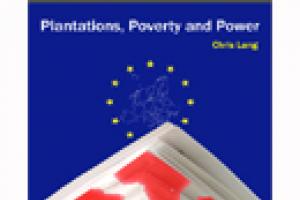By Chris Lang
Indonesia
Publications
18 December 2008
Bulletin articles
26 October 2008
It has been 63 years after Soekarno-Hatta proclaimed the independence of the Indonesia Republic on August 17, 1945. Every August especially on the 17th, Indonesians all along the archipelago celebrate this nation's anniversary.
Bulletin articles
27 September 2008
Indonesia is the world's second largest palm oil producer; together with Malaysia they account for about 80 percent of global palm-oil production. With actually around 6 million hectares of land planted with oil palm, Indonesia plans a significant expansion which is set to cover up to 20 million hectares by 2020.
Bulletin articles
26 June 2008
The state-owned company Perhutani boasts of having “one of the highest percentages of forest plantation in the world” (http://perhutaniproducts.com/) with a land area of 2,426,206 Ha in Java and Madura Island of Indonesia.
It has also the gloomy record of having severely damaged or destroyed well over half the 'state forest' of Wonosobo in Central Java (see WRM Bulletin Nº 96).
Other information
28 April 2008
A recent study published by WWF (1) analyzes deforestation and forest degradation in Riau Province between 1982 and 2007 and identifies their main drivers: pulpwood and oil palm industrial plantations.
The study shows that the fastest rate of deforestation in Indonesia is occurring in central Sumatra's Riau province, which used to have 78% of its land covered by forest. In the past 25 years, some 4.2m hectares (65%) of its tropical forests and peat swamps have been cleared for industrial plantations.
Other information
2 February 2008
Indonesia: Call for Action against certification of Riau Andalan Pulp and Paper’s timber plantations
The giant pulp company PT. Riau Andalan Pulp and Paper (PT. RAPP), operating in Riau Province, is applying for a Plantation Forest Management Certificate from the Indonesia Ecolabeling Institute (LEI) Certification System.
Riau-based NGOs and several regional and national NGOs are strongly challenging the application on several grounds including:
Other information
2 February 2008
The major issue of land tenure underlies the problem of oil palm schemes in Indonesia and elsewhere. Occupying large tracts of community land where food and cash crops used to be grown and medicines and building materials were harvested, monoculture oil palm plantations erode the rights and livelihoods of local communities.
Through promises, bribes, and cheating combined with the unawareness of local communities of their rights, companies move in leading to the large-scale privatisation of land and natural resources.
Other information
3 January 2008
Indonesia, a leading producer of palm oil, reached an output of 16 million tonnes in 2006, having tripled the area of land under oil palm plantation between 1995 and 2005.
Bulletin articles
5 December 2007
During the Conference of the Parties to the United Nations Framework Convention on Climate Change held in Bali, Indonesia, in December 2007, a number of social movements and groups agreed to establish a coalition called Climate Justice Now! in order to enhance exchange of information and cooperation among themselves and with other groups with the aim of intensifying actions to prevent and respond to climate change.
Bulletin articles
5 December 2007
For the first time in the history of the United Nations Convention on Climate Change, a world wide coalition of women drafted position papers with the women’s and gender perspective on the most pressing issues negotiated at this Convention that took place in Bali, Indonesia from 3 to 14 December. Gender and Climate Change (gender cc), a global alliance of women for climate justice, presented their position papers at a press conference during the Convention and distributed hundreds of copies to government delegates.
Bulletin articles
8 November 2007
In 1992, governments acknowledged that climate change was real and that something needed to be done to avoid a major catastrophe. As a result, they signed and ratified the United Nations Framework Convention on Climate Change (UNFCCC). Fifteen years have passed and the Convention’s Conference of the Parties will meet for its 13th time in Bali, Indonesia, from 3-14 December 2007.
Bulletin articles
8 November 2007
The present expansion of monoculture tree plantations has not happened by chance or just because some governments got this idea. On the contrary, it is the result of the action of a group of actors that set out to promote such plantations.
In the fifties, the FAO became the main ideologist behind the large scale monoculture eucalyptus and pine plantation model in the South (as part of the so-called Green Revolution, promoted by this organization), as a response to the needs of large industrial companies that were exhausting their traditional sources of raw material.

